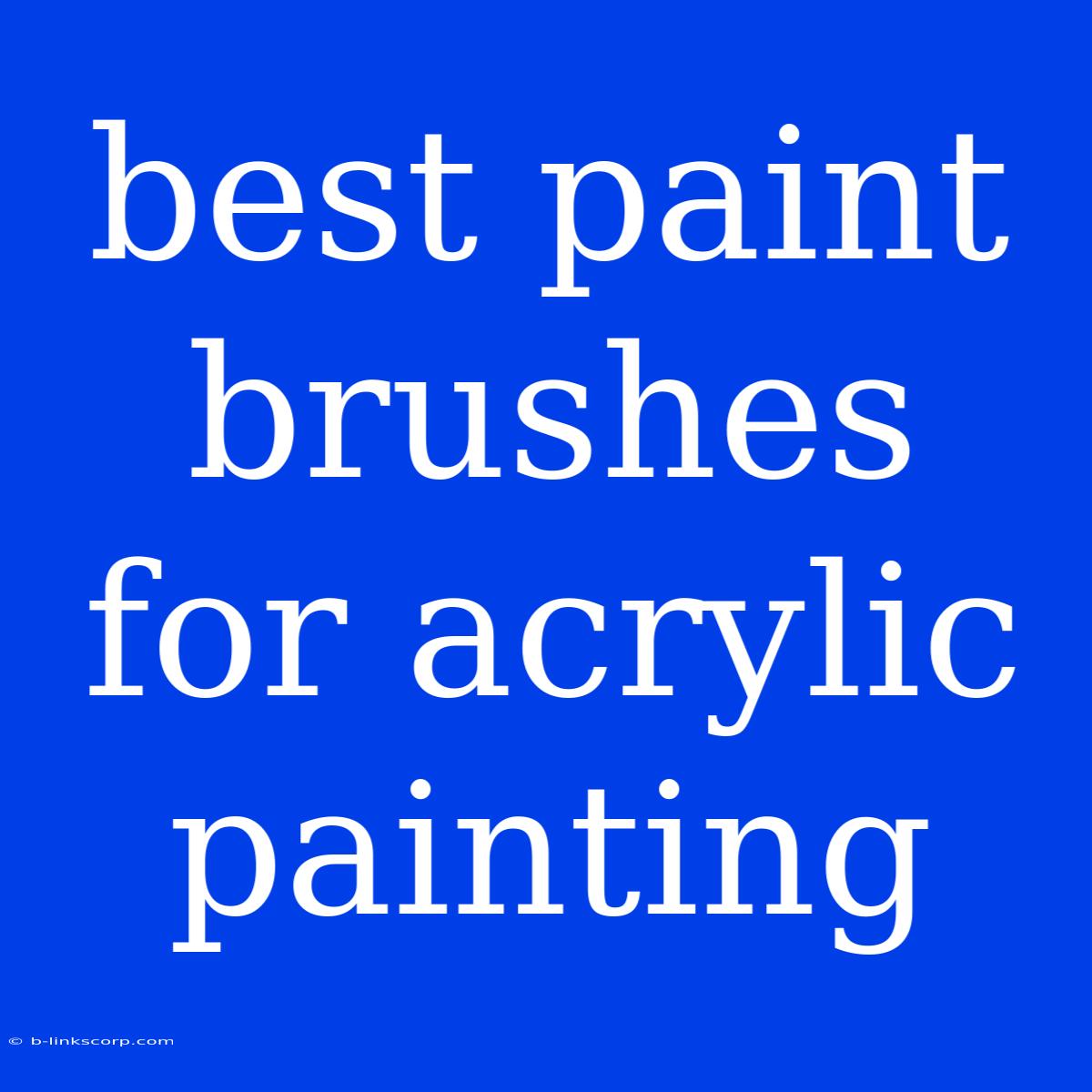Best Paint Brushes for Acrylic Painting: Your Ultimate Guide to Choosing the Right Tools
Acrylic painting offers a vibrant and versatile medium for artists of all skill levels. But to truly unlock its potential, you need the right tools - and the most important among them are your paint brushes. Choosing the best paint brushes for acrylic painting can feel overwhelming with so many options available. This guide will help you navigate the world of brushes and find the perfect ones for your acrylic painting needs.
Understanding Brush Types and Their Uses
The first step to choosing the right brush is understanding the different types and their specific uses. Here are some popular categories:
1. Round Brushes:
- Uses: Detail work, fine lines, blending, and layering.
- Characteristics: Round, pointed tip, available in various sizes.
- Example: Series 7 by Winsor & Newton, Kolinsky Sable Brushes
2. Flat Brushes:
- Uses: Large areas, washes, textural effects, and creating sharp edges.
- Characteristics: Flat, rectangular tip, available in various widths.
- Example: Rosemary & Co. Pure Series 20, Princeton Velvetouch Synthetic Brushes
3. Fan Brushes:
- Uses: Blending, creating soft edges, and textural effects.
- Characteristics: Fan-shaped tip, available in various sizes.
- Example: Silver Brush Black Velvet Fan Brushes, Winsor & Newton Series 7 Fan Brush
4. Filbert Brushes:
- Uses: Blending, layering, and creating both fine and broad strokes.
- Characteristics: Oval-shaped tip, offering a balance between flat and round brushes.
- Example: Princeton Velvetouch Filbert Brushes, Rosemary & Co. Pure Series 22
5. Angle Brushes:
- Uses: Creating sharp edges, fine lines, and achieving controlled strokes.
- Characteristics: Angled tip, providing control and precision.
- Example: Silver Brush Black Velvet Angle Brushes, Rosemary & Co. Pure Series 28
6. Detail Brushes:
- Uses: Precise lines, small details, and intricate work.
- Characteristics: Very small and fine tip, available in various shapes.
- Example: Winsor & Newton Series 7 Detail Brush, Princeton Velvetouch Detail Brushes
Choosing the Right Brush Material
Once you understand the different brush types, you need to consider the material of the bristles. Here are the most common options:
1. Natural Bristles (Sable, Squirrel, Badger):
- Pros: Excellent for blending, holding a lot of paint, and creating smooth strokes.
- Cons: Expensive, prone to damage with rough surfaces, may shed.
- Ideal For: High-quality work, detailed paintings, and smooth washes.
2. Synthetic Bristles:
- Pros: Affordable, durable, available in a wide range of shapes and sizes, ideal for acrylics.
- Cons: May not hold paint as well as natural bristles, can sometimes feel rougher.
- Ideal For: Beginner and intermediate painters, various painting styles, and frequent use.
Factors to Consider When Choosing Your Brushes
- Your Painting Style: Do you prefer detailed work, bold strokes, or blending techniques?
- Budget: Synthetic brushes are generally more affordable than natural bristles.
- Frequency of Use: If you paint regularly, consider durable, high-quality brushes.
- Surface: Different surfaces require different brush types (e.g., smoother surfaces require softer bristles).
- Size: Choose the size appropriate for the scale of your painting and the details you want to achieve.
Cleaning and Caring for Your Brushes
Proper cleaning and care extend the lifespan of your brushes.
- Clean Immediately After Painting: Acrylic paint dries quickly, so clean your brushes right away with water and a mild soap.
- Avoid Harsh Chemicals: Harsh chemicals can damage the bristles and shorten the brush's life.
- Proper Storage: Store brushes upright with the bristles facing up to prevent warping.
Conclusion
The best paint brushes for acrylic painting are those that complement your style and needs. Remember, experimenting with different brush types, materials, and sizes is essential to finding what works best for you. With the right tools and a little exploration, you can create stunning acrylic paintings that truly reflect your artistic vision.

